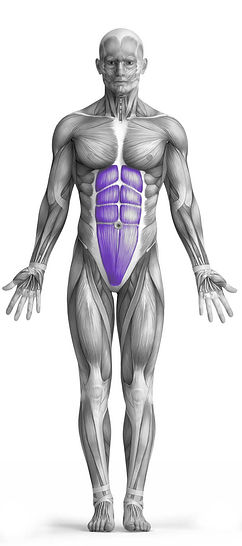Lying Alternate Floor Leg Raise 101 Video Tutorial
0

Exercise Synopsis
Target Muscle Group
Abs
Secondary Targets
None
Execution
Isolation
Force Type
N/A
Required Equipment
Bodyweight
Fitness Level
Beginner
Variations
None
Alternatives
None
Timer
Hour
Minute
Second
Stopwatch
00:00:00:00
Overview
The "Lying Alternate Floor Leg Raise" is an effective bodyweight exercise primarily targeting the abdominal muscles. To perform this move, you lie flat on your back with your legs extended and lift one leg at a time towards the ceiling, keeping the other leg in contact with the floor. This alternating leg movement engages the lower and upper abs as you maintain a controlled, steady pace. The exercise is simple yet effective, requiring no equipment other than your body weight, making it ideal for strengthening the core without any added resistance.
How to Perform
Begin by placing a mat on the floor and lying flat on your back, ensuring your legs are extended straight out in front of you and your arms are resting at your sides, palms facing down.
To prepare for the exercise, slightly lift your heels off the floor, engaging your core.
Keep your right leg extended and lifted off the ground while slowly raising your left leg upwards until it reaches a 90-degree angle.
Carefully lower your left leg back to the starting position, making sure it doesn’t touch the floor, and maintain control throughout the movement.
Repeat the same motion with your right leg, alternating between each leg for the desired number of repetitions.
★ Bonus: For exercises that involve external weights (such as dumbbells, barbells, or machines), the One Rep Max (1RM) calculator can help you estimate your maximum lifting capacity. Use it to track your strength progress and adjust your training for optimal results.
Tips
Ensure that your feet remain elevated off the ground throughout the entire set.
Avoid pausing at the peak of the movement. Instead, maintain a smooth and controlled motion from start to finish.
Perform the exercise at a steady pace, focusing on slow and deliberate movements for better muscle engagement.
How Not to Perform
Avoid Using Momentum: Do not swing or jerk your legs to lift them. This can strain your muscles and reduce the effectiveness of the exercise. Focus on using controlled movements to target the abs, rather than relying on momentum.
Don’t Let Your Lower Back Arch: Keep your lower back pressed into the mat. Arching your back can cause unnecessary strain on the spine and take the focus off your abs. Engage your core to stabilize your body and protect your lower back.
Don’t Rush the Movement: Avoid moving too quickly through the exercise. Fast movements can reduce the time your muscles are under tension, diminishing the effectiveness of the workout. Perform the exercise slowly to fully engage the abdominal muscles.
Avoid Lifting Both Legs Simultaneously: Always alternate legs, keeping one leg on the floor while the other is raised. Lifting both legs at the same time can make the exercise less challenging for your abs and increase the risk of straining your lower back.
Don’t Let Your Legs Drop Too Low: Lower your legs slowly and stop just before they touch the floor. Letting your legs drop too far can strain your hip flexors and lower back. Maintain control and keep your legs in a range that allows you to fully engage your core.
Avoid Shallow Breathing: Don’t hold your breath during the exercise. Make sure to breathe steadily throughout the movement to keep your core engaged and avoid unnecessary tension in your body.
Don’t Let Your Head Lift Off the Mat: Keep your head relaxed on the mat. Lifting your head can create tension in your neck and shoulders, distracting from the focus on your abs.
Variations
Variations of fitness exercises refer to different ways of performing a specific exercise or movement to target various muscle groups, intensities, or goals. These variations aim to challenge the body differently, prevent plateaus, and cater to individuals with varying fitness levels.
Alternatives
Alternative exercises in fitness refer to different movements or activities that target similar muscle groups or serve the same training purpose as the primary exercise. These alternative exercises can be used as substitutes when the original exercise is unavailable or challenging to perform due to various reasons such as equipment limitations, injuries, or personal preferences.








